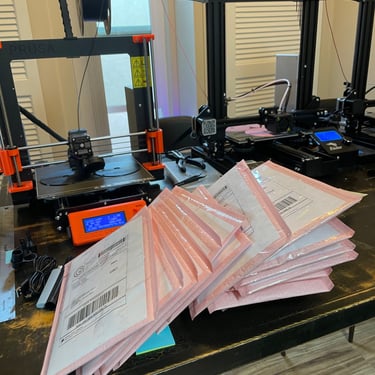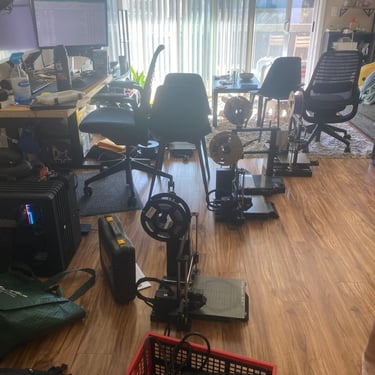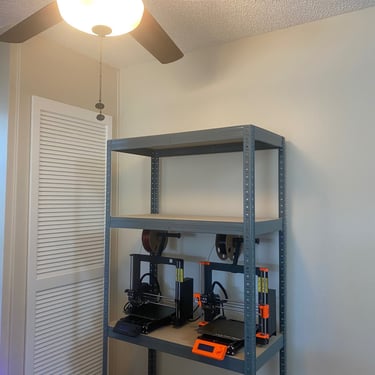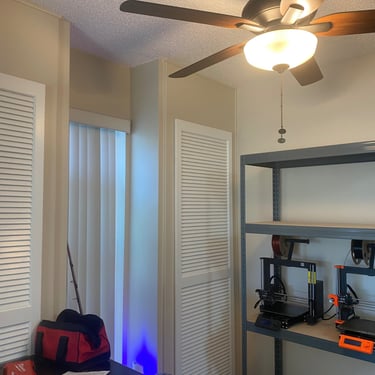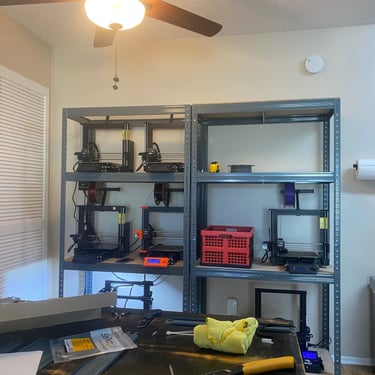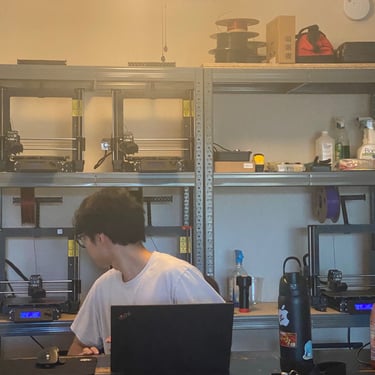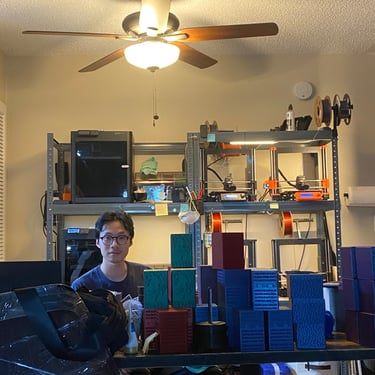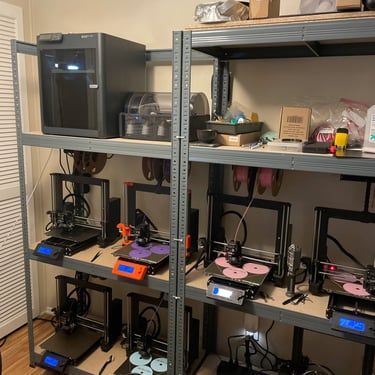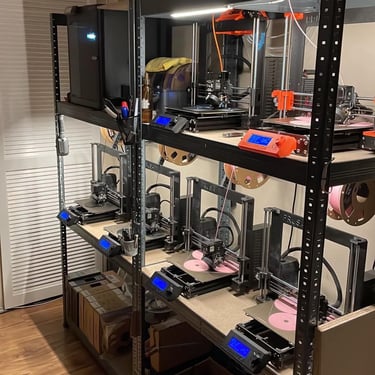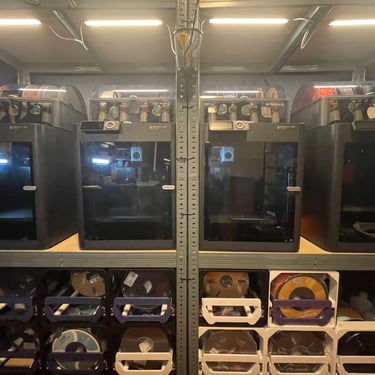The Journey of Scaling a 3D Printing Business
This project started with a simple need: scale up operations to meet growing demand. Close friends sparked the journey when they shared an idea after a trip to the movies. They noticed reusable cups came with single-use lids and pitched the idea of creating permanent, reusable lids instead. We listed the product online, and while it started slow, momentum picked up.


Before we knew it, our small operation—powered by just two printers (an Ender-3 and a Prusa MK3)—needed to grow. We dove into Facebook Marketplace, hunting for used printers to keep up with demand. It wasn’t always smooth sailing. One seller raised their price mid-drive (lesson learned: lock in the price beforehand), but another turned out to be an incredible mentor. He ran a 100-printer farm and not only sold us several printers at a steal but also shared invaluable tips about scaling a 3D printing business. The 3D printing community is full of great people, and I’m grateful for their support.
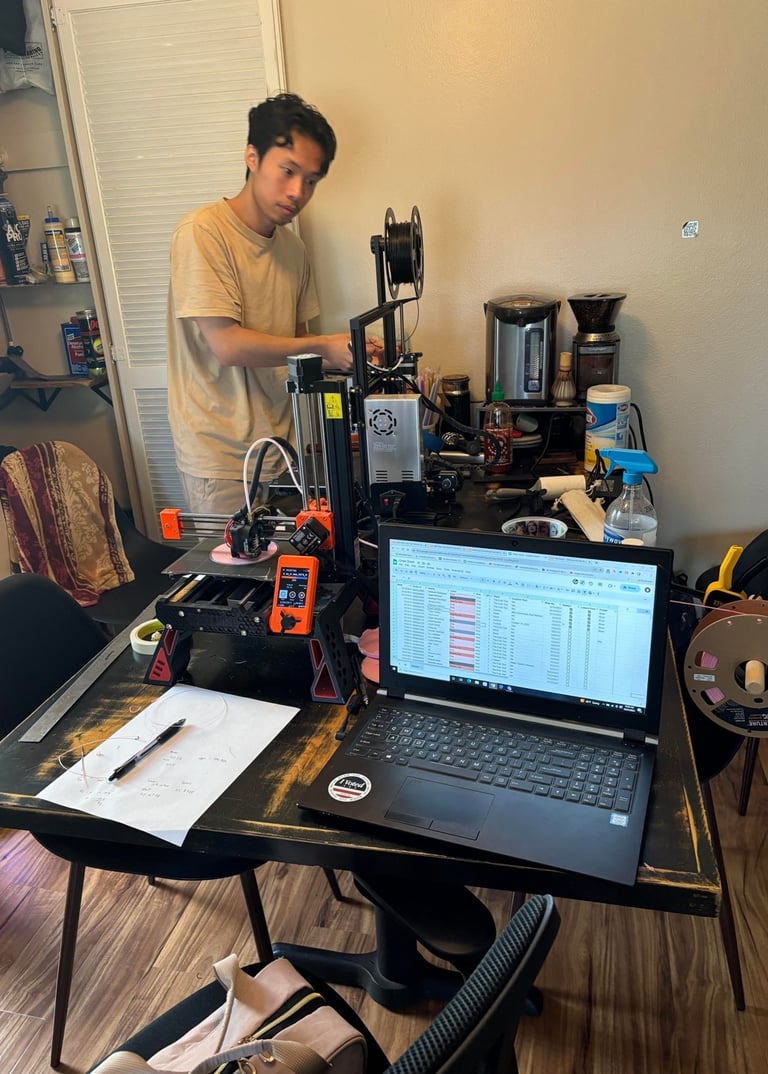

Scaling up came with its own set of challenges. Squeezing 12 printers into a small apartment required custom shelving to maximize vertical space. Then there was the issue with power—six printers per outlet on what I assumed were dedicated circuits. Let’s just say I learned the hard way when all 12 printers running at once tripped the breaker and ruined several prints. Pro tip: always check your power supply! Environmental factors were another curveball. Santa Barbara’s high humidity and lack of AC meant fluctuating temperatures and breezes from an open window affected print quality. Without enclosures, the printers struggled with adhesion on colder nights. Every issue became a lesson in troubleshooting, and I realized each printer had its own quirks.
Eventually, we decided it was time to upgrade. We transitioned to Bambu Lab printers—powerhouses that offered enclosures, faster print speeds, and multi-color capabilities. One Bambu printer could replace two Prusas in efficiency, saving us time and effort. Managing six high-performing printers was far more productive than juggling 12 with constant maintenance.
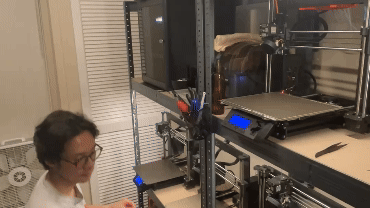

GIF of me starting up some prints with the trusty PRUSAS. A lot of manual work.
This journey taught me the importance of focusing on what really matters: designing new products and improving quality, not babysitting machines. The right tools free you to innovate and grow.
I don’t have an engineering background, but with the right intent, focus, and a willingness to learn, I built a thriving 3D printing business. The journey wasn’t always easy, but every setback was an opportunity to grow. If I can do it, so can you. Whether you’re starting with one printer in a small apartment or dreaming big, remember: innovation starts with action. The key is to stay curious, adapt to challenges, and never stop building.
Closing Remarks

